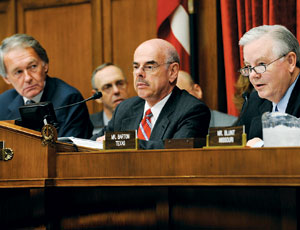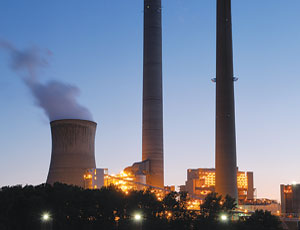The U.S. House of Representatives took the first steps toward approving an ambitious and wide-ranging global-warming bill on May 21. The Energy and Commerce Committee approved a bill that industry sources are calling historic by a 33-25 vote, largely along party lines.


The massive bill—more than 930 pages—is the result of weeks of hearings and negotiations in the House, and it is supported by a wide range of environmental groups, corporations, electric utilities and energy companies. But the road ahead for the bill is long and its ultimate prospects uncertain, with markups required by several other House committees before it can be considered on the House floor. There is no comparable bill in the Senate.
House Speaker Nancy Pelosi (D.-Calif.) says the bill is “something we will now build upon as we go forward,” and plans to bring the bill to the House floor by the end of July. But it still faces numerous critics and some considerable hurdles: the House Parliamentarian says the bill falls under the jurisdiction of virtually every House committee. The Ways and Means Committee plans to take up the bill soon after the Memorial Day recess.
The bill would seek to reduce greenhouse-gas emissions by 83% by 2050 through a cap-and-trade system and a variety of other renewable-energy and energy-efficiency requirements. The bill also would boost funding for the development of commercially viable carbon-capture and sequestration technologies and require utilities to generate 20% of their power from renewable sources by 2020. States would be allowed to meet 8% of their renewable portfolio through energy-efficiency improvements.
The bill also includes a number of provisions to improve energy efficiency in buildings, including a requirement that the Secretary of Energy support code-setting organizations in establishing building codes that achieve 30% higher energy-efficiency targets in 2010 and 50% higher targets by 2016, as well as establish a program to develop standards and processes for retrofitting existing residential and non-residential buildings. The bill also would establish a building labeling program through the U.S. Environmental Protection Agency.
Additionally, states would be required to establish goals for greenhouse-gas reductions from the transportation sector and impose sanctions on states that fail to submit goals or plans.
The legislation represents a wealth of opportunities for engineering and construction firms, says Rich Rudin, senior vice president of Overland Park, Kan.-based Black & Veatch’s management consulting division. “Already, utilities are wondering how they are going to be able to manage all the activity that is going to originate from the [American Recovery and Reinvestment Act],” he notes, adding that the new legislation would create additional layers of funding and programs on top of the new programs established under ARRA.
A wide variety of organizations support the bill, ranging from Duke Energy, the Edison Electric Institute, Exelon and BP America to the National Wildlife Federation, the Natural Resources Defense Council and the Sierra Club.
“We do support the bill because we have always said we would support reasonable climate legislation,” says Melissa McHenry, spokeswoman for Columbus, Ohio-based American Electric Power. “There are pieces of this bill that will mitigate some of the economic impact” on utilities, such as the way allowances will be allocated, she says. Timelines are structured so carbon-capture and storage technology can be developed before increasingly stringent cap levels are put in place, she adds. To that end, AEP is building a 20-MW carbon-capture and sequestration validation project at its Mountaineer plant in New Haven, W. Va.
| Cuts global-warming pollution in 2020 by 17% compared with 2005 levels; 42% in 2030, and 83% by 2050. |
| Promotes renewable-energy sources and carbon-capture and sequestration technology development. |
| Promotes energy efficiency in buildings, appliances, transportation and industry. |
| Provides additional funding for green jobs training. |
Critics contend the legislation would cost thousands of jobs, particularly in the auto industry. A study by the American Council of Capital Formation, a public-policy research firm, of the failed Lieberman-Warner climate-change bill introduced in the Senate during the last session of Congress found that Michigan would have lost up to 121,786 jobs by 2030. During markup of the current bill, Committee Chairman Henry Waxman tried to quell concerns—mainly from Republicans—over potential job losses, noting there was funding for training.
Critics also charge the bill would prove costly to taxpayers, potentially raising electricity rates for consumers by as much as 90% after adjusting for inflation. Joe Barton (Texas), the ranking Republican on the Energy and Commerce Committee, says, “We have legitimate and serious concerns about the redirection of our energy policy in America.”
In the Senate, Environment and Public Works Committee Chairwoman Barbara Boxer (D-Calif.) says she plans to hold a series of hearings on the Waxman-Markey bill. The Senate Energy and Natural Resources Committee has been drafting portions of an energy-standards bill, but Daniel Lashof, director of the Natural Resources Defense Council’s Climate Center thinks the Waxman-Markey bill will be the Senate’s starting point.


Post a comment to this article
Report Abusive Comment